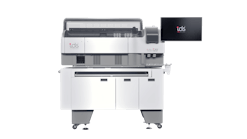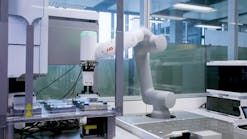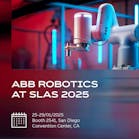Novel bioprinter shows potential to speed tissue engineering
The dream of tissue engineering is a computer-controlled manufacturing of complex and functional human tissue for potential organ regeneration or replacement.
University of Alabama at Birmingham biomedical researchers have found a way to speed that tissue creation using a novel bioprinter built for $2,000, they report in the journal Micromachines. Building blocks for the tissue are pre-grown spheroids of human induced-pluripotent stem cells that contain 200,000 cells per spheroid.
The first commercial bioprinter from Japan builds tissue one spheroid at a time, placing the spheroids on metal pins that can be removed after the growing cells expand and fuse into tissue. The UAB approach could increase the efficiency of that scaffold-free bioprinting by as much as a hundred-fold.
The key? The UAB proof-of-concept bioprinter picks up multiple spheroids at the same time and places them simultaneously on a matrix of pins. The UAB prototype used a 4-by-4 matrix of 16 pins, so 16 spheroids could be placed at once, with a cycle speed of 45 seconds. A video, which does not include the reservoir of spheroids, shows how one cycle works.
The machine, about the size of a toaster, fits easily in a biosafety hood and its parts can be sterilized by autoclave or ethylene oxide.
The machine has three main components. First is a spheroid bath stage that holds a watch glass with a concave bottom. Pre-grown spheroids sit in that reservoir, and the shape settles them into the center of the vessel. For loading, the stage swings into place underneath second main part, the print head.
The print head has 16 holes arranged in the shape of a needle matrix at the bottom of the bioprinter. The head dips into the reservoir, and a vacuum pump pulls spheroids onto each of the holes. The head, carrying the spheroids, then lifts, the stage swings away and the head descends to that third main part, the needle-array bath.
At the tips of the 16 needles, the print head slowly pushes the spheroids onto the needles. The vacuum is released, freeing the spheroids from the print head, which then rises for another cycle.
In development of the prototype, glass beads were used first to measure the spheroid pick-up efficiency for the vacuum pump-print head. Then, alginate beads were used to test the bioprinter’s ability to correctly print onto the needle array. Finally, as proof-of-concept, pre-grown spheroids of human induced-pluripotent stem cells were used to confirm the ability of the bioprinter to place an array of cellular spheroids onto the array.
The UAB bioprinter effectively aspirated and transferred a single layer of cellular spheroids onto the needles.
“This novel, layer-by-layer scaffold-free bioprinter is efficient and precise in operation, and it can easily be scaled to print large tissues,” said Jianyi “Jay” Zhang, M.D., Ph.D., who led the research and is corresponding author. “Having the ability to build larger, more clinically relevant tissues in a shorter length of time using this method would be very beneficial for various fields of medicine and clinical research.”




